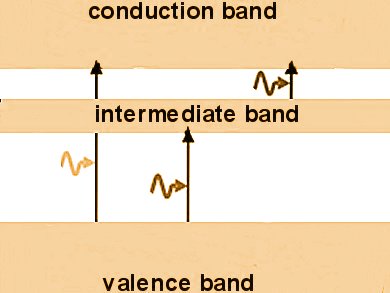In conventional p–n junction solar cells, only photons with energies close to the bandgap of the semiconductor cell material can be converted to electricity efficiently. Photons with energies lower than the bandgap are wasted. Intermediate band solar cells (IBSC) consist of multiple absorption bands to increase the photocurrent, and ultimately its efficiency.
The optimum material parameters of intermediate band solar cells which lead to high efficiencies close to the detailed balance limit have been determined by Tugba Selcen Navruz and Muzeyyen Saritas, Gazi University, Ankara, Turkey. They found that the optimum intermediate band level and the base width depend on the mobility and effective density of the state values. Materials used should provide an effective density of the state value NCV higher than 1017 cm–3 and a carrier mobility larger than 200 cm2/Vs. Besides, the light concentration should not be higher than 1000 to prevent efficiency loss.
The team showed that the overlap causes a huge decrease in efficiency in case of equal absorption coefficients. The effect of overlap is compensated when the absorption coefficient of a smaller bandgap reduces the interval of the overlap.
- Determination of the optimum material parameters for intermediate band solar cells using diffusion model,
Tugba Selcen Navruz, Muzeyyen Saritas,
Progr. Photovoltaics: Res. Applic. 2012.
DOI: 10.1002/pip.2283




